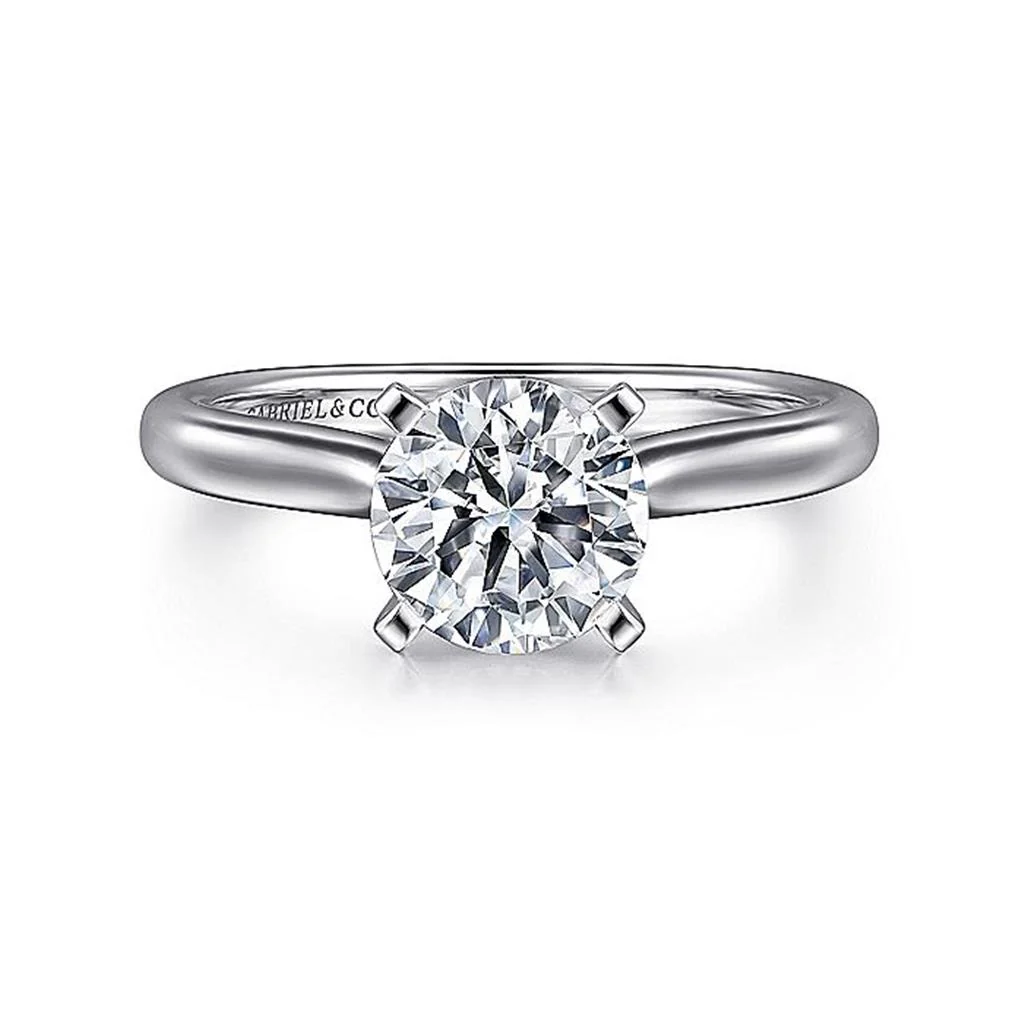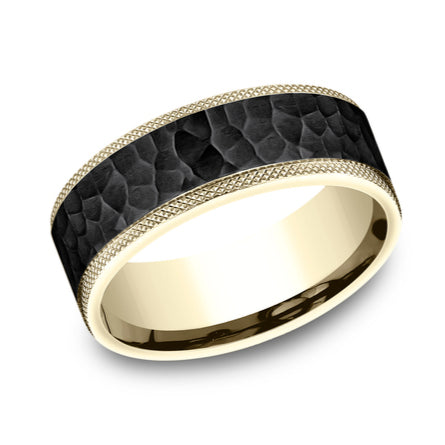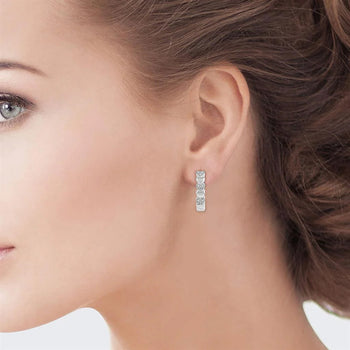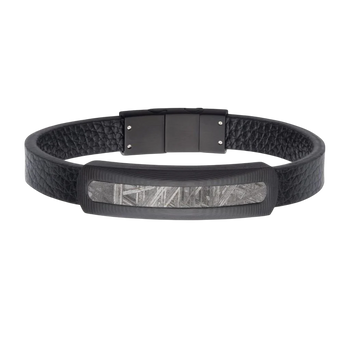
The World’s Most Valuable (Prized) Gemstones
Key takeaways
- Rarity, origin, and physical characteristics like color and clarity play a major role in a gemstone’s value.
- Investment-grade gemstones must be carefully selected, authenticated, and well-maintained to appreciate in value.
- Certification and gemological reports are crucial for verifying authenticity and value.
- Regular care and expert inspections help preserve the longevity and brilliance of valuable gemstone jewelry.
The World’s Most Valuable (Prized) Gemstones
Diamonds, sapphires, rubies, and other gemstones are widely coveted throughout the world. While these gemstones are beautiful, the most valuable gemstones in the world offer specific qualities, such as rare details, unique colors, or rich history, that transcend them beyond typical value and into pricelessness. Explore the world’s most valuable gemstones and learn how Jeweler’s Touch can help you find your own priceless jewelry.
The Most Valuable Gemstones in the World Today
Gemstones have been treasured for thousands of years, valued not just for their beauty but also for perceived spiritual, cultural, and even medicinal significance. Modern assessments determine the value of a gemstone by its color, clarity, cut, and carat weight. However, unique qualities and overall rarity are often the common denominators across the world’s most expensive stones and the rare gemstones list.
Diamonds
Blue Diamond:
- Top value: The most famous stones are valued as high as $4 million per carat..
- Why it's valuable: Extremely rare natural blue color caused by trace amounts of boron. Famous stones like The Oppenheimer Blue and The Blue Moon of Josephine have sold for tens of millions.
- Notable sale: The Oppenheimer Blue, 14.62 carats, sold for $57.5 million, one of the most expensive gemstones in the world.
Pink Diamond:
- Top value: Famous rare ones can fetch over $2 million per carat.
- Why it's valuable: Exceptionally rare and often found only in the now-closed Argyle Mine in Australia.
- Notable sale: The Williamson Pink Star, 11.15 carats, sold for $57.7 million in 2022.
Red Diamond
- Top value: Legendary rarities valued up to Around $1 million+ per carat.
- Why it's valuable: The rarest color among diamonds. Almost all red diamonds are under 1 carat.
- Notable piece(s): The Moussaieff Red Diamond, 5.11 carats, estimated value of $20 million.
Jadeite
- Top value: World-renowned gems can reach prices of over $3 million per carat for imperial jadeite.
- Why it's valuable: Especially prized in Chinese culture. Imperial jadeite, which is vivid green and translucent, is extremely rare.
- Notable piece(s): The Hutton-Mdivani Necklace sold for $27.4 million.
Ruby
- Top value: Famed one-of-a-kind stones are valued as high as Over $1.2 million per carat.
- Why it's valuable: The vivid “pigeon blood” rubies from Myanmar are highly prized for their rich color.
- Notable piece(s): Estrela de Fura, 55.22 carats, sold in 2023 for $34.8 million.
Emerald
- Top value: Up to $300,000+ per carat for flawless Colombian stones.
- Why it's valuable: Deep green color and clarity, with historical significance and scarcity of high-quality specimens.
- Notable piece(s): Rockefeller Emerald, 18.04 carats, sold for $5.5 million.
Alexandrite
- Top value: Over $100,000 per carat for Russian-origin, high-carat, color-change stones.
- Why it's valuable: Rare color-changing property (green in daylight, red in incandescent light) and limited deposits.
- Notable piece(s): High-quality specimens over three carats can sell for $50K–$100K+ per carat.
Musgravite
- Top value: Famed one-of-a-kind stones are valued as high as Around $35,000 per carat.
- Why it's valuable: One of the rarest gemstones ever discovered, with very few cut stones in the world.
- Notable piece(s): The current biggest known stone is the Ophir Grand Musgravite at 214 carats.
Black Opal
- Top value: $10,000–$30,000+ per carat.
-
Why it's valuable: Rarest and most valuable opal due to vivid "play-of-color" on a dark base.
Notable piece(s): The Virgin Rainbow, valued at over $1 million.
Red Beryl
- Top value: Can go for $20,000–$50,000 per carat.
- Why it's valuable: Found only in Utah, and in very small quantities. Much rarer than emerald or ruby.
- Notable piece(s): The American Museum of Natural History owns two of notable red beryl gemstones — the "Scarlet Wonder" and the "Red Beryl Suite".
Why Are Some Gemstones More Valuable Than Others?
Gemstone value is influenced by more than just size or sparkle. Four primary factors — color, clarity, cut, and carat weight — make up the standard valuation model used by gemologists. However, additional variables, such as origin, rarity, durability, and market demand, influence prized gemstones and their value.
For instance, diamonds are widespread but still hold immense value due to their cultural symbolism and demand in engagement rings. In contrast, red beryl or musgravite — found in extremely limited geographical areas — are highly valuable simply because so few quality specimens exist. A pigeon blood ruby or an alexandrite with strong color-shifting effects can fetch significantly more than other stones of similar weight.
What Makes a Gemstone a Good Investment?
While investing in gemstones isn’t as common as traditional assets, select precious stones can serve as stable stores of value. A good investment-grade gemstone has a mix of characteristics that give it long-term appeal and rarity. These include:
- Natural origin (not lab-created).
- High clarity and minimal inclusions.
- Vivid and uniform color.
- Scarcity in the market.
- Strong documentation and certification.
Gemstones like Burmese rubies, Colombian emeralds, and Kashmir sapphires are especially desirable due to limited supply and sustained global interest.
Can Gemstones Appreciate in Value?
Yes, gemstones can appreciate in value, particularly those that are rare, well-preserved, and accompanied by proper documentation. Auction houses like Sotheby’s and Christie’s have showcased record-breaking sales of diamonds, rubies, and emeralds, proving that fine gemstones can act as lucrative investments over time.
However, unlike stocks or real estate, gemstone appreciation depends on market interest, supply scarcity, and gem condition. Exceptional gems with vivid color, provenance, and high carat weight tend to increase in value more significantly than lower-grade stones.
Risks vs. Rewards of Gemstone Investing
Rewards:
- Tangible assets that can be enjoyed while owned
- Resistance to inflation and market fluctuations
- Portfolio diversification
Risks:
- Difficulty in immediate resale at full value
- High risk of counterfeit or misrepresented stones
- Value is heavily influenced by fashion and demand trends
- Requires expert evaluation and insurance
How Can I Tell If a Gemstone Is Authentic?
Authenticating a gemstone is crucial before making a purchase — whether it’s for personal enjoyment or investment. Many high-quality lab-created gemstones can closely mimic natural ones, making it difficult to distinguish between the two.
That said, there are distinguishing features to learn about and a few identifying techniques to help you determine if a gemstone is authentic.
- Use a jeweler’s loupe (10x magnification) and inspect the gemstone for bubbles, color zoning, surface flaws, and internal inclusions. Natural stones typically show imperfections, while synthetic or imitation gems often look unnaturally flawless.
- The Mohs hardness scale measures a gemstone's resistance to scratching. For example, a sapphire (hardness 9) won’t be scratched by quartz (hardness 7), but a diamond (hardness 10) can scratch both. Hardness testing can help reveal identity mismatches.
- Weight and density testing compares a gem’s weight to its size. For example, a real ruby will weigh more than a same-sized glass imitation. An accurate digital scale makes it easier to detect these differences and assess authenticity.
- When shopping for diamonds, take a look at the online American Gem Society grading system.
- If you’re still not sure about a gemstone’s authenticity, you can also contact an AGS-certified gemologist or a GIA Graduate Gemologist for a consultation.
Red flags when buying valuable gemstones
Beware of:
- “Too good to be true” deals or deeply discounted gems.
- Poor return policies or vague descriptions.
- Online listings without detailed provenance.
It’s always advisable to shop from trusted jewelers, like Jeweler’s Touch, with a strong customer service track record.
Caring for Your Valuable Gemstone Jewelry
To maintain the brilliance, value, and structural integrity of your gemstone jewelry, regular care is essential.
At-home care tips
- Clean regularly with lukewarm water and mild dish soap using a soft toothbrush.
- Store separately to avoid scratching—use soft pouches or padded jewelry boxes.
- Avoid harsh chemicals like bleach, acetone, or ammonia, which can damage surfaces.
- Remove jewelry during workouts, swimming, or household chores to avoid impact and exposure to abrasives.
When to bring jewelry to a professional
Bring your gemstone jewelry to a professional jeweler:
- At least once a year for a thorough inspection and cleaning.
- If you notice loose prongs, discoloration, or chips in the stone.
- Before or after major life events (weddings, anniversaries, etc.) to ensure the piece is in top condition.
Professional cleanings often include ultrasonic or steam treatments and microscopic inspections to catch early signs of wear.
Service Area
We proudly serve:
Brea, CA ZIP codes: 92821, 92823
Nearby cities: Fullerton, Placentia, Yorba Linda, La Habra, Anaheim Hills
Let us help you find a gemstone that’s not just beautiful, but truly timeless.
The Benefit of Booking with Jeweler’s Touch (Brea, CA)
We understand the emotional and financial significance of fine gemstone jewelry. Whether you’re looking to purchase an investment-grade ruby, design a custom engagement ring, or authenticate a rare opal, our experienced gemologists and staff are here to guide you every step of the way.
We offer:
- Full-service gemstone sourcing and appraisals
- Custom design and restoration services
- Certified natural and lab-grown diamonds and gemstones
- Professional cleanings, inspections, and repairs
Although $80 million diamonds aren’t for the average buyer, fine jewelry can be equally as affordable as it is precious. At Jeweler’s Touch, we offer a wide selection of natural and lab-grown diamonds, coveted jewelry lines, custom bridal rings, and more. Contact us today to explore our fine jewelry services.
Frequently Asked Questions
How are gemstone prices determined? What factors are most important?
Color, clarity, cut, and carat weight influence gemstone pricing. Jewelers evaluate these four factors to assess the quality of the gemstone and determine its value. The price also reflects the rarity and current demand for the gemstone.
What’s the difference between precious and semi-precious gemstones?
Traditionally, precious gemstones include diamonds, rubies, sapphires, and emeralds. Semi-precious gemstones refer to all other gems (e.g., amethyst, garnet, peridot). However, this distinction is outdated in gemology — some semi-precious stones are rarer and more valuable than so-called precious ones.
Can treated gemstones still be considered valuable
Yes, treated gemstones can still be valuable, especially if the treatment is common and disclosed (e.g., heat-treated sapphires).
Are lab-grown gemstones as valuable as natural ones?
No. While lab-grown gemstones are visually similar and chemically identical to natural gems, they are not as rare and do not hold or appreciate in value the way natural gemstones do. They're great for affordability, but not for investment purposes.
Is investing in gemstones better than diamond jewelry?
Sometimes. Rare colored gemstones can outperform diamonds, but diamonds are easier to resell.
Can I insure my gemstone jewelry?
Yes. Get it appraised and insured to protect against loss, theft, or damage.
Which gemstones are becoming harder to find and why?
Gemstones such as benitoite, black opal, red beryl, and ammolite are some of the world’s rarest gemstones. They’re only found in certain parts of the world, and deposits become depleted as demand increases.
Are there trends in gemstone popularity?
Fashion and technology trends often influence gemstone popularity. As trends evolve, the color and cut of specific gemstones become more popular than others. Diamonds, rubies, sapphires, and emeralds remain timeless and are consistently popular.
Do certain gemstones have cultural or symbolic significance?
Many gemstones hold cultural or symbolic significance in various regions or cultures around the world. For example, diamonds are often used for engagement and wedding rings due to their association with love and purity. In Chinese, Meso-American, and Maori cultures, jade is symbolic of different traits, such as good fortune and virtue.
Are gemstones a good investment? What makes them different from buying gold or stocks?
Some rare gemstones can be a good investment, but typically gemstones are purchased for their beauty and enjoyment. They differ from gold and stocks because they’re not as easily liquidated and may take longer to find a buyer.
I inherited a gemstone piece of jewelry. How can I get it appraised?
If you inherit a gemstone piece of jewelry, bring it to Jeweler’s Touch for appraisal service. Our GIA gemologists view your jewelry through a 10X gemscope to thoroughly evaluate the piece. We’ll give you an official appraisal document with a detailed description of the item and its appraised value.
What's the best way to care for and clean gemstone jewelry?
Clean your gemstone jewelry at home using a mild cleanser and a soft toothbrush. Store it in secure locations, remove it during exercise or physical labor, and minimize its exposure to harsh chemicals and sunlight. Bring your gemstone or crystal jewelry in for professional cleaning at Jeweler's Touch in Brea.
Do certain countries produce higher-quality gemstones?
Some countries are known for producing high-quality gemstones due to unique geological conditions. Myanmar is famous for pigeon’s blood rubies, Colombia for deep green emeralds, Sri Lanka for high-clarity sapphires, and Brazil for Paraíba tourmalines.
- Tags: All Gemstones Jewelry Collection








